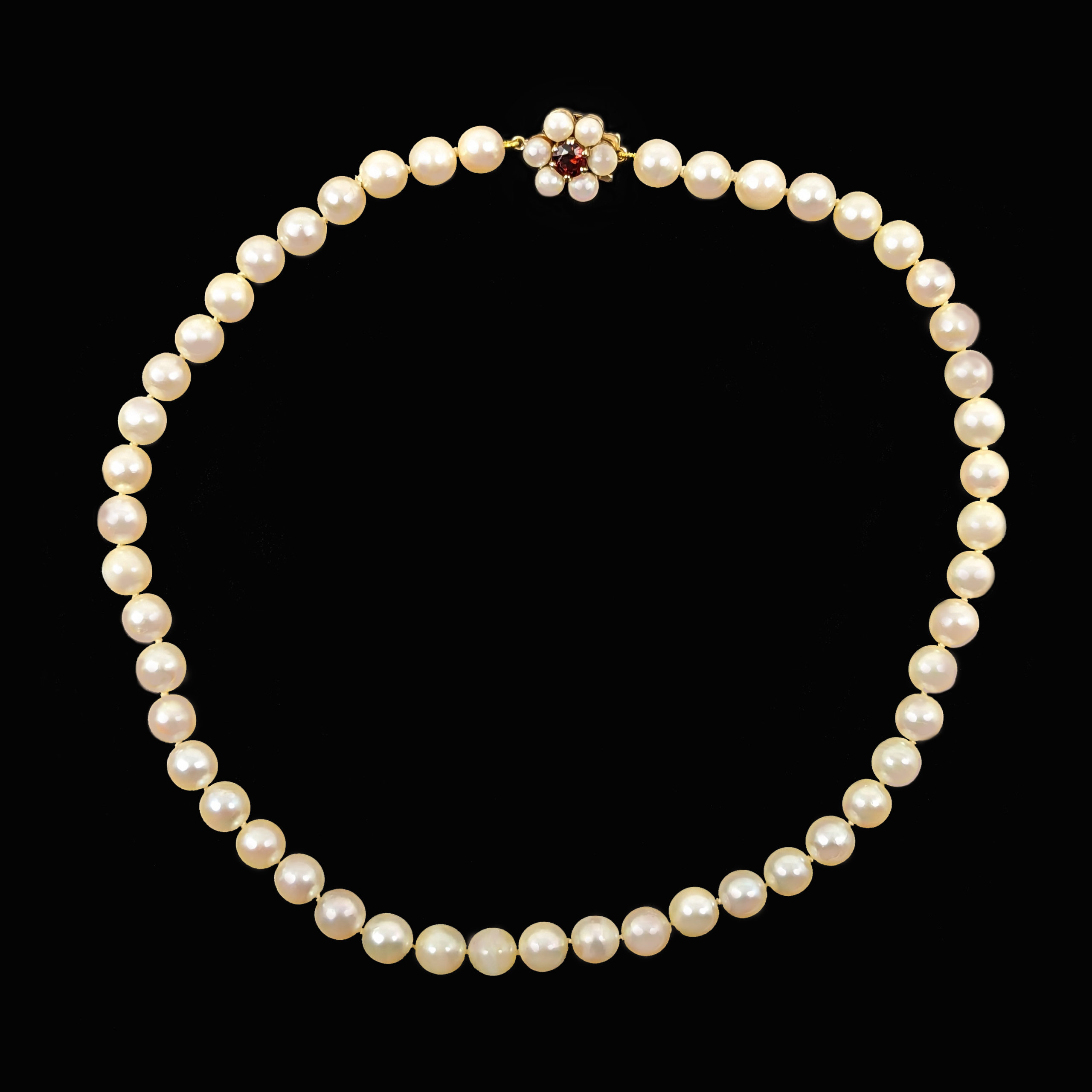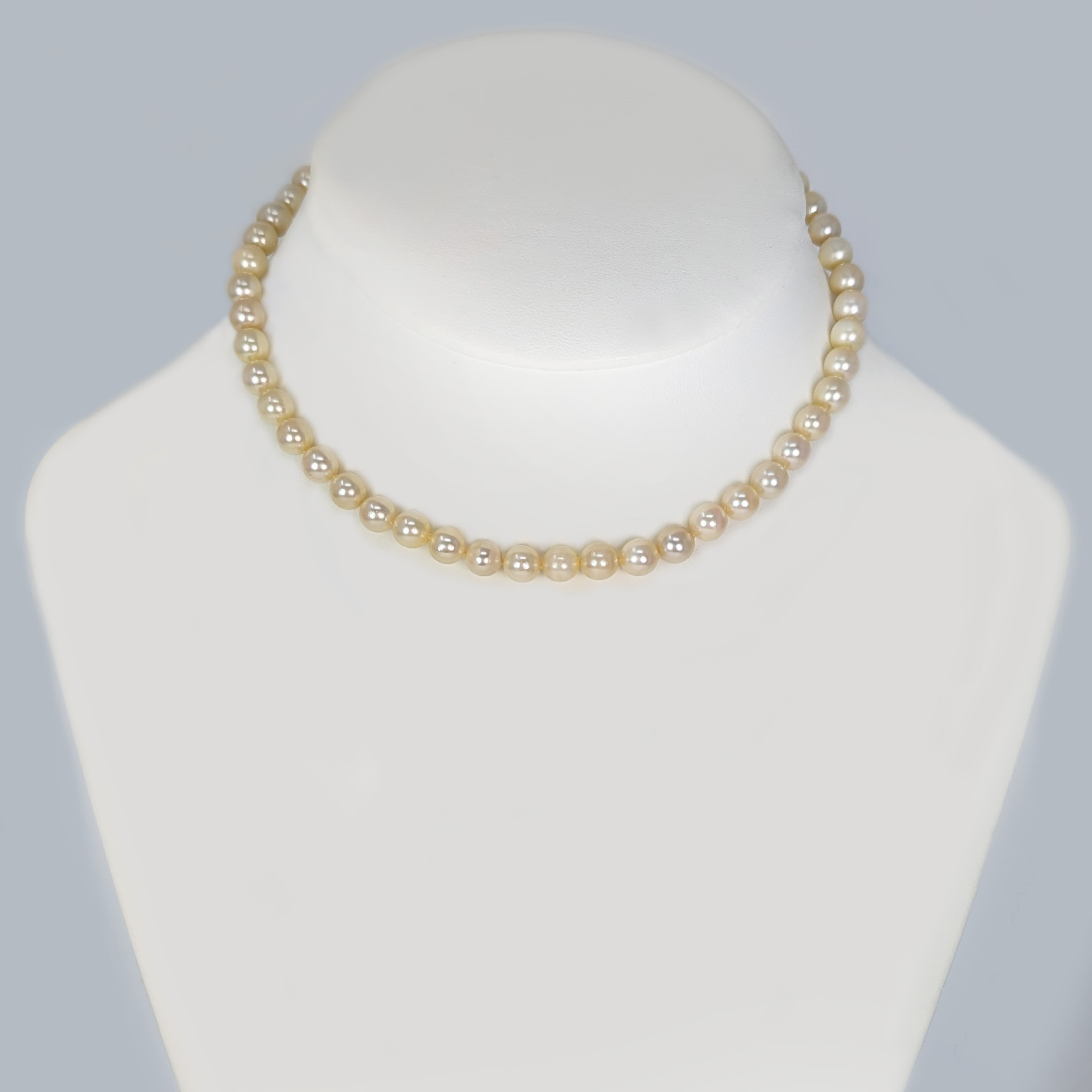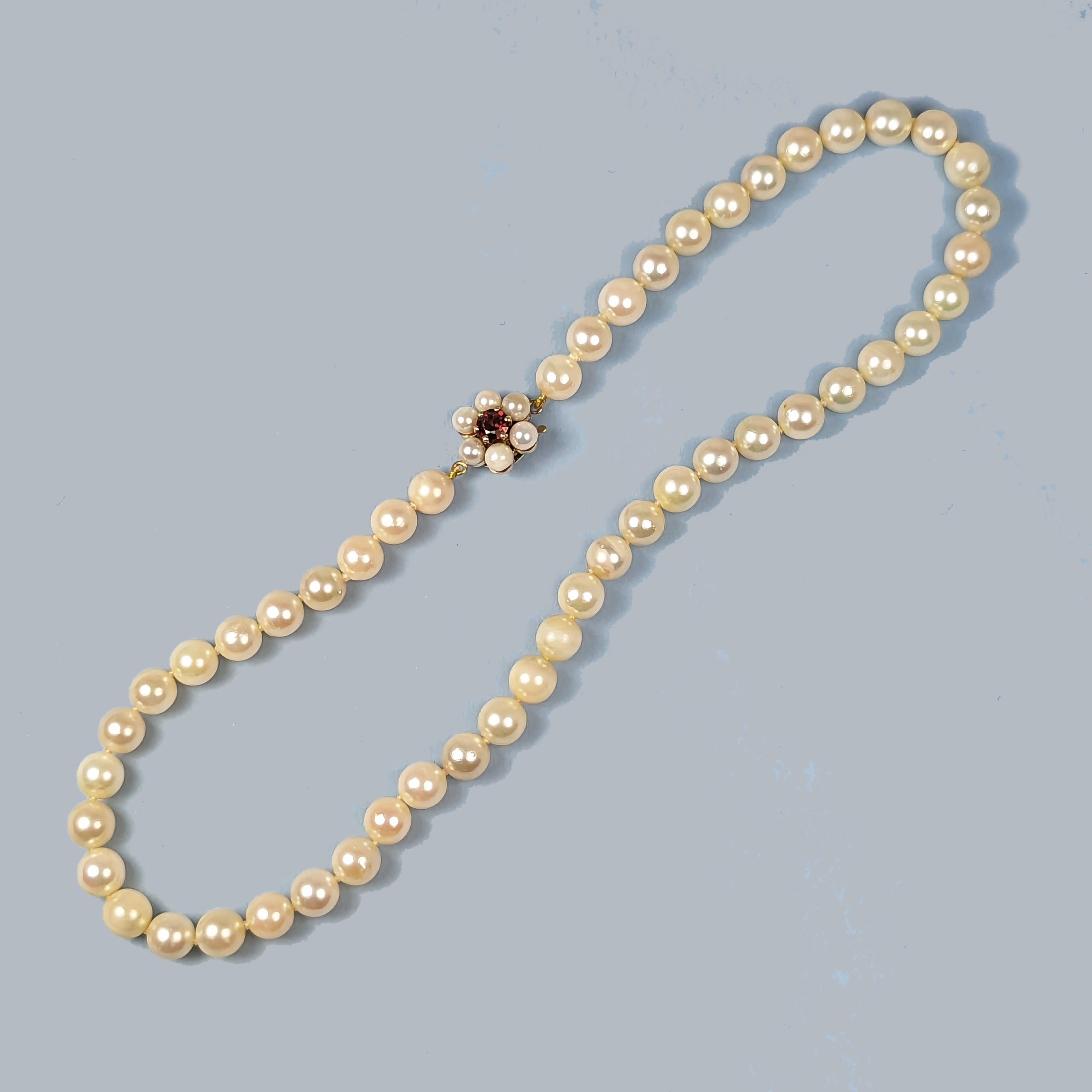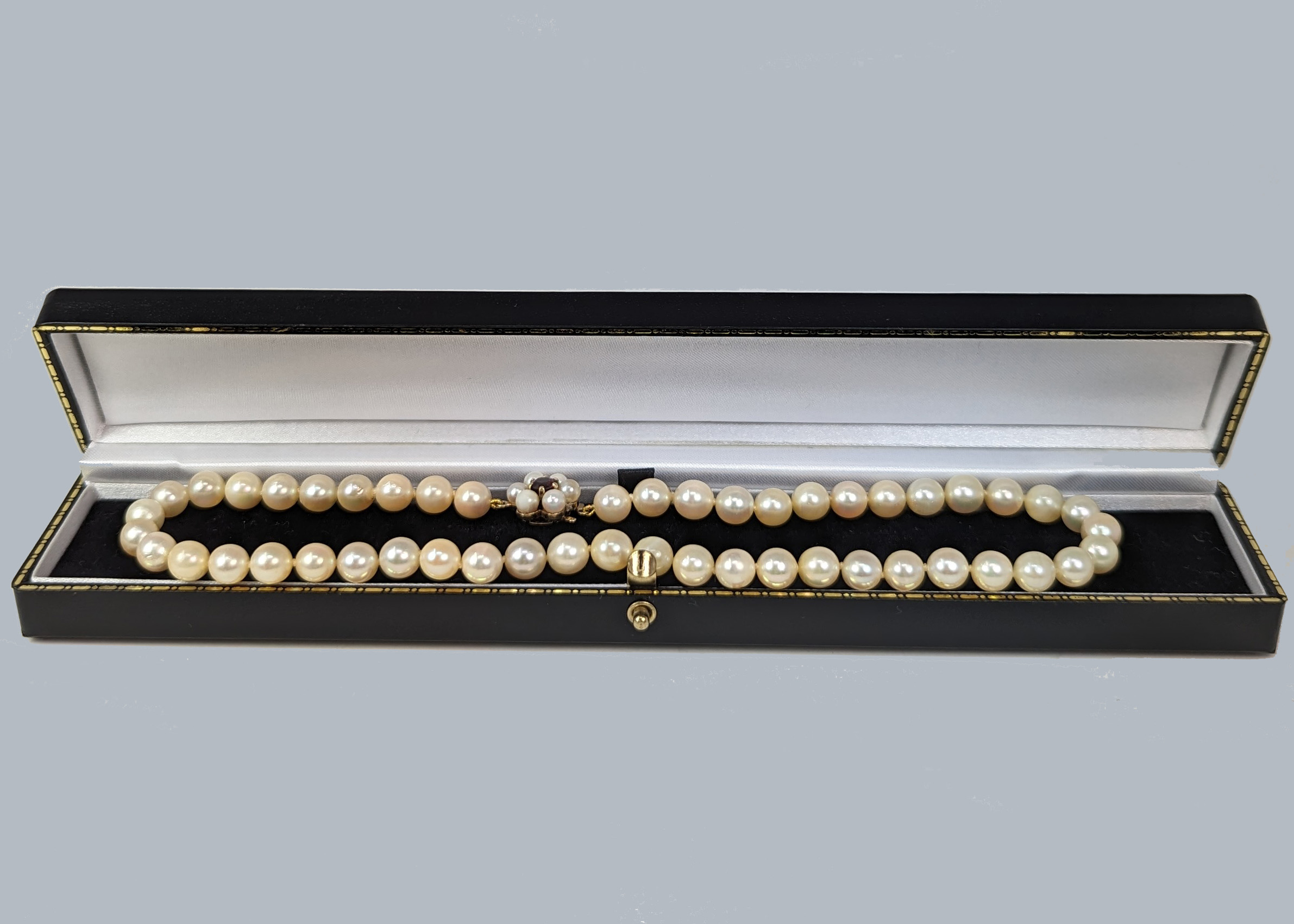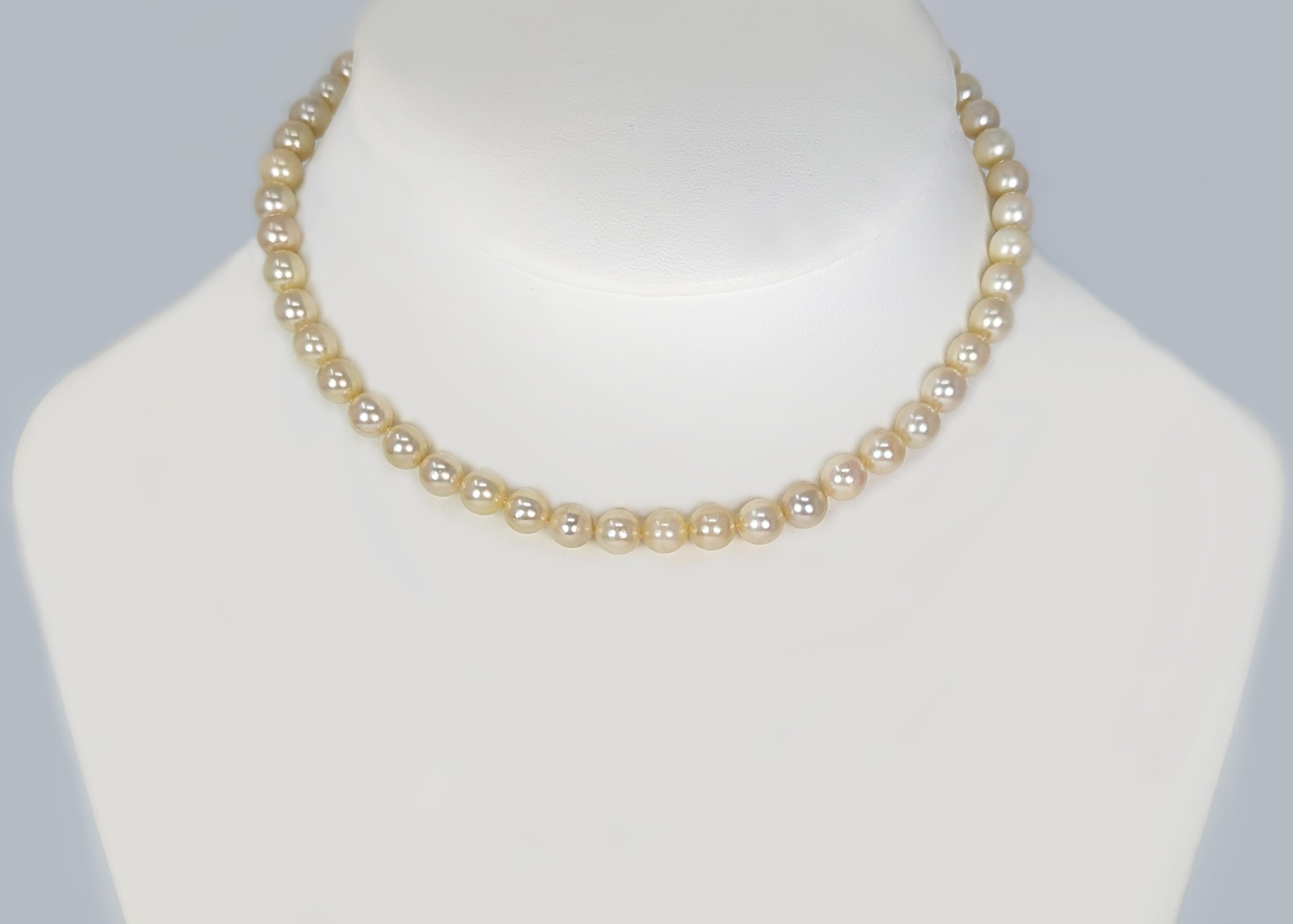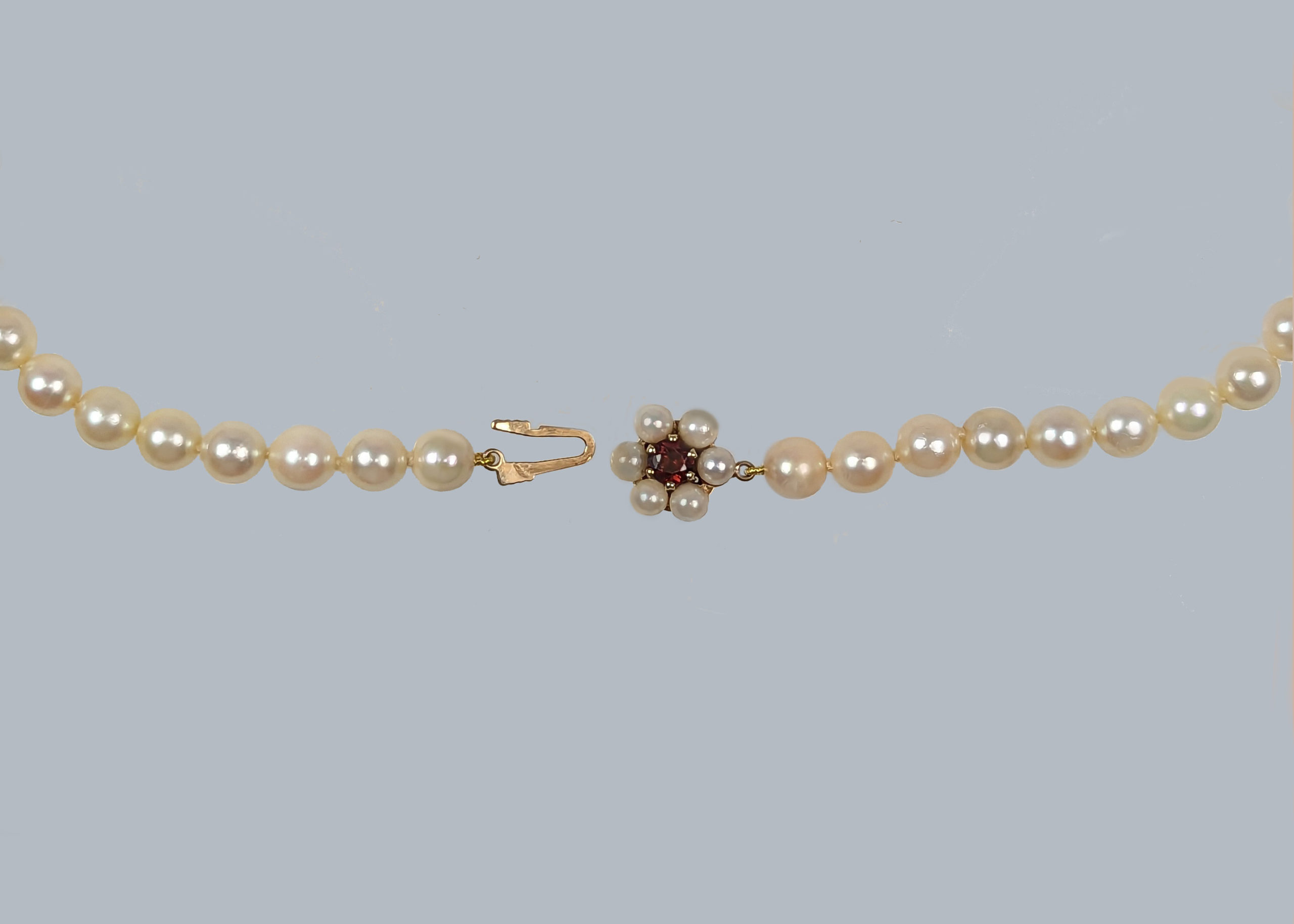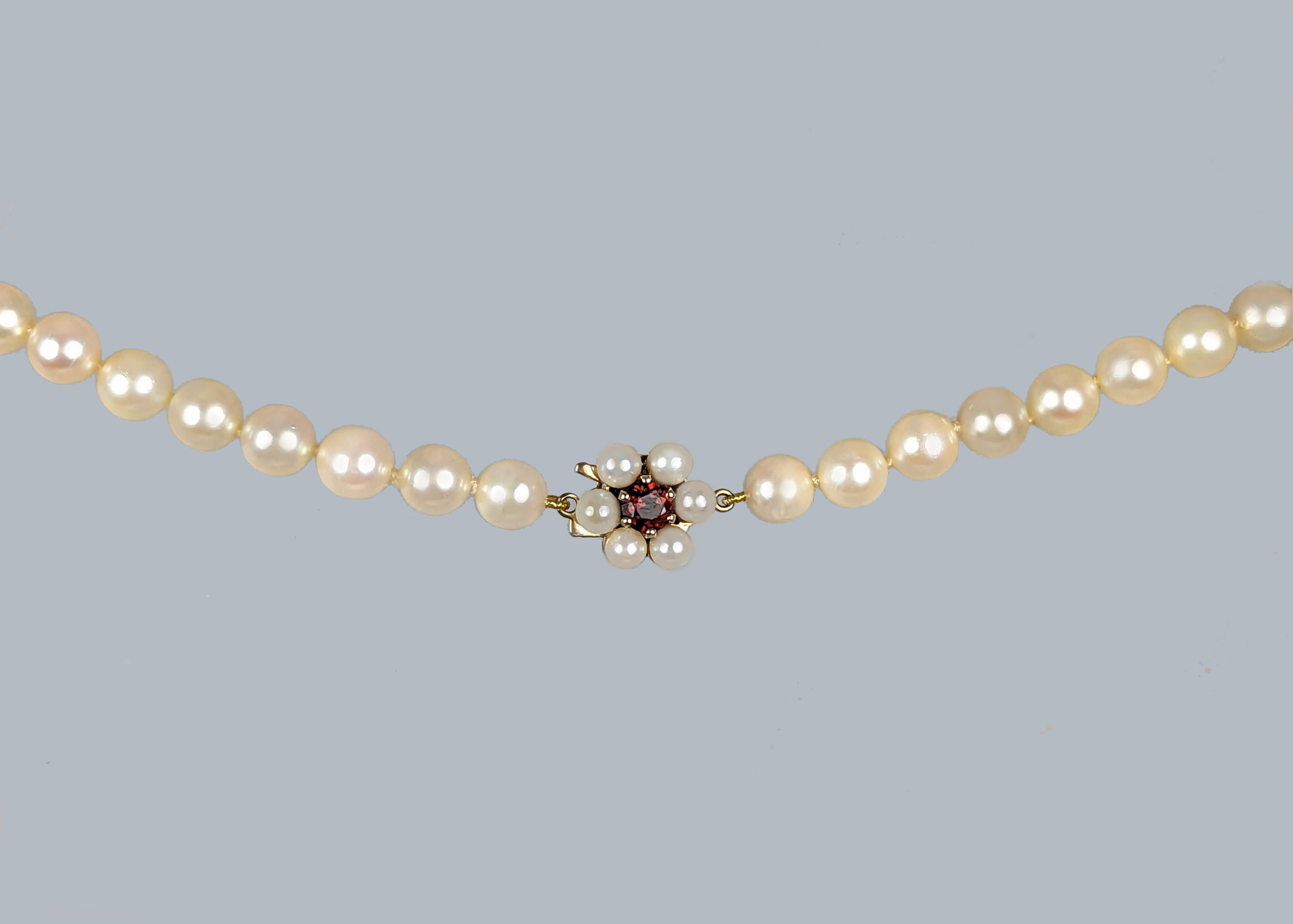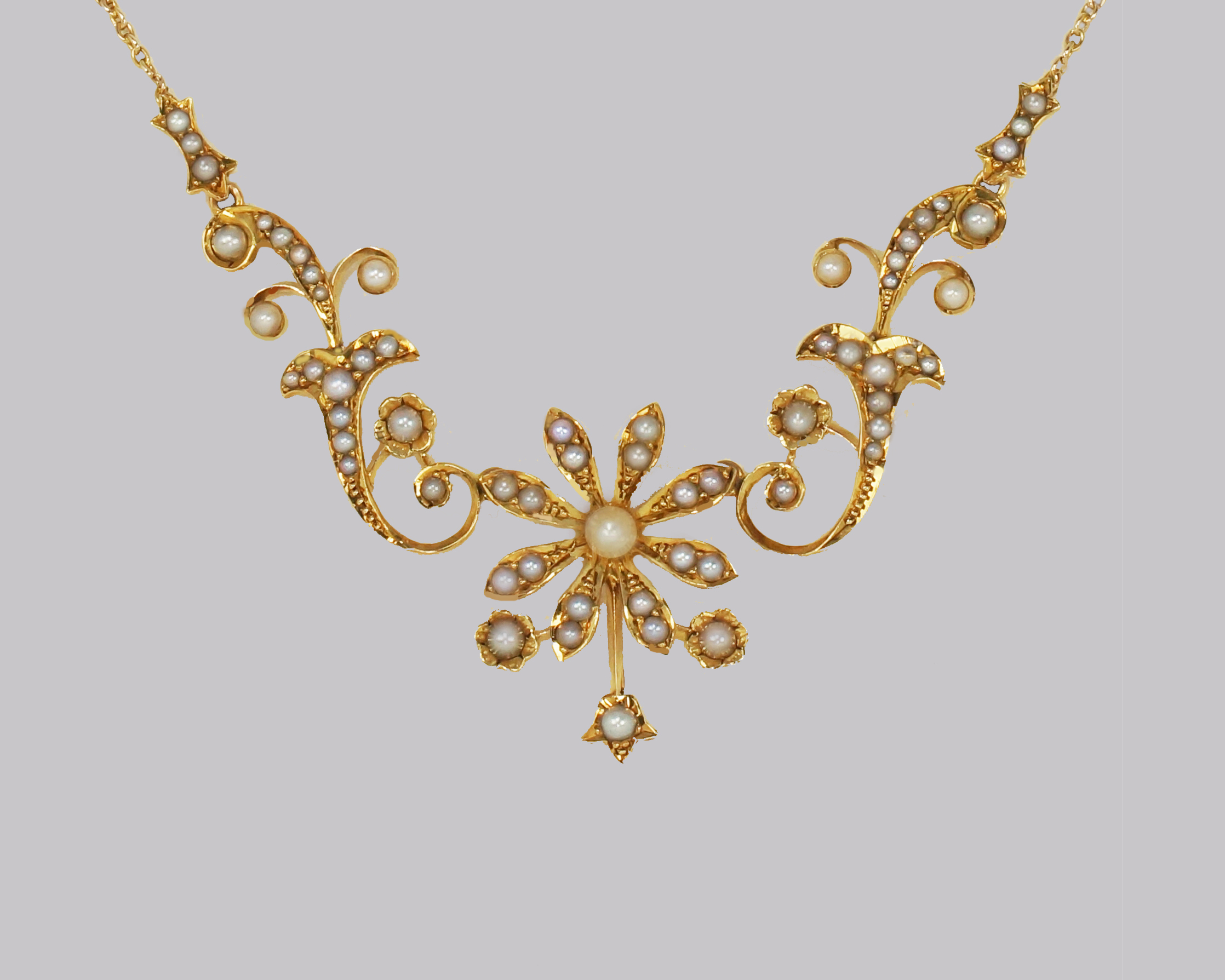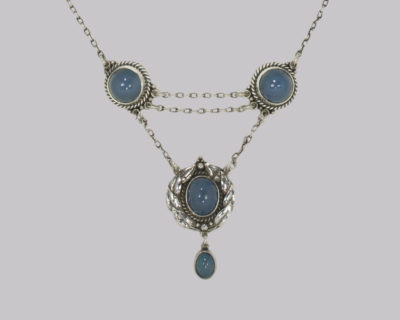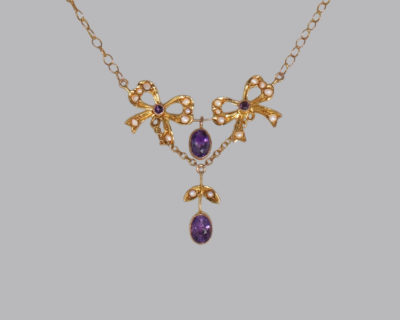Description
Vintage garnet pearl necklace
Gorgeous pearl necklace with fabulous 9 carat gold garnet floral clasp
Recently re strung the individually knotted pearls are a wonderful creamy ivory pink colour with excellent lustre
This single strand pearl choker necklace has a very attractive floral clasp.
It is set to the centre with a beautiful red garnet that is surrounded by six pretty little pearls
This fantastic vintage garnet pearl necklace looks stunning when worn
- The necklace is 15″ (38cm ) long (choker length)
- 50 cultured pearls approx.7.2mm
- Floral cluster clasp 12mm
- Central garnet 5mm
- Clasp fully hallmarked 9ct gold Birmingham 1985
- Secure push hook clasp
- Necklace weighs 27 grams
- The necklace is in excellent condition.
- Pearls are smooth and even coloured with excellent lustre
- It comes in the presentation box illustrated
- Our ref : 23124
View more beautiful necklaces and pendants
Pearls, amber and coral are precious gems produced by plants and animals. These gems are adored because they are so attractive and rare and have thus been worn as jewellery for thousands of years. The most highly prized and the most expensive of this group are the fabulous and amazing pearls, they have one unique quality, which is, they can be worn by anyone, at any time, in any situation!
Factors affecting the price of pearls.
Pearl types, Lustre, thickness of nacre, colour, shape, size, surface quality, treatment status. The most expensive type of pearl is the natural pearl, these were the only type available until about 1900, when Mikimoto started to produce cultured pearls. Cultured pearls are from farmed oysters, whereas natural pearls come from “wild” oysters. Also, we have sea water pearls from the oceans and freshwater pearls from the rivers and streams. Seed pearls were very small pearls used extensively in Victorian jewellery. Artificial pearls are made from many materials often coloured glass.
Pearls are traditionally the birthstone for June.
Care of your vintage-antique pearls.
Pearls are delicate and can easily be damaged, pearl is just 2.5 on the Mohs hardness scale. They should be wrapped in silk cloth so that they do not dry out, or become scratched by other hard objects or jewellery.
Pearls absorb oils from your skin and it keeps them looking Bright, New and Lustrous! Otherwise, Pearls will Dry Out and turn an Ugly Yellow Hue!
Also, pearls are not resistant to sprays and perfumes.
Garnet
In past times garnet jewellery was abundant and modestly priced, but recently the price of good antique pieces has resulted in a rapid and justifiable reassessment of their status. Garnet is found in several colours, although red is the most common. There are two distinct red varieties found in antique jewellery: Pyrope Garnet: Blood red garnet used extensively in 18th and 19th century. Georgian pyrope garnets were invariably cut flat and oval in shape, set in gold and frequently foiled to improve their appearance. Common Georgian designs included cushion-shaped brooches with half pearl decoration and hair locket centers, flower spray brooches, graduated collet riviere, and necklaces of foliate design sometimes suspending below a Maltese cross pendant convertible to a brooch. 19th century pyrope garnets were used abundantly during the “Grand” period mid-Victorian opulence and were ideal gems for extravagant effect. A popular fashion involved cutting garnets “en cabochon” and hollowing out the backs to lighten the look of the stones. Cabochon garnets are often referred to as “carbuncles”. Pyrope garnets were used in the 19th century Czechoslovakian and German jewellery in pavé-set clusters of multi-faceted stones. Known as Bohemian garnets, they were often mounted in low grade gold or in guilt metal in hundreds of different designs, from modest brooches to elaborate teardrop necklaces.


